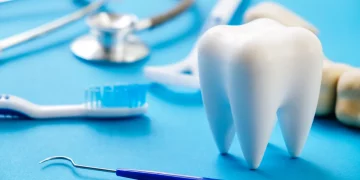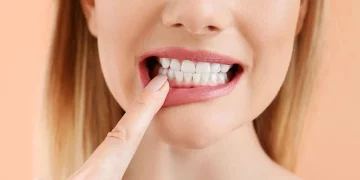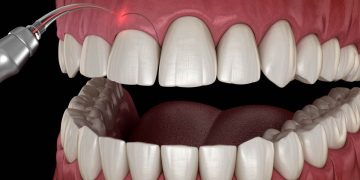A minor chip or a hairline crack in a tooth is an incredibly common occurrence, yet it can feel disproportionately distressing. That small imperfection can draw your eye every time you smile in the mirror, creating a nagging sense that your smile is no longer whole. The immediate fear for many is the prospect of an expensive and invasive procedure like a crown or a veneer. However, modern conservative dentistry offers a range of elegant, minimally invasive solutions designed to repair these flaws while preserving the vast majority of your natural tooth structure. The philosophy is simple: maximum cosmetic and functional improvement with minimal biological cost.
So, what are these gentle giants of restorative dentistry, and how can they restore your smile without the need for drastic drilling? This article delves into the world of conservative cosmetic corrections, focusing on the two primary techniques for addressing minor damage: cosmetic bonding and enamel shaping. We will explore how these procedures work, their ideal applications, and provide a clear analysis of their cost considerations compared to more extensive alternatives, empowering you to make an informed decision about your dental health.
The Art of Illusion: Cosmetic Dental Bonding
Cosmetic bonding, also known as composite bonding or direct composite veneers, is the quintessential minimally invasive repair technique. It involves the application of a tooth-colored, putty-like composite resin material that is sculpted directly onto the tooth and hardened with a special light.
The Procedure, Step-by-Step:
- Shade Selection: The dentist uses a shade guide to select a composite resin that perfectly matches the color and translucency of your natural teeth. Advanced techniques often involve using multiple shades to mimic the nuanced color variations of natural enamel.
- Tooth Preparation: This is where bonding shines in its conservatism. Typically, no anesthesia is needed. The dentist gently roughens the surface of the tooth and applies a conditioning liquid. This process is minimal and creates microscopic pores for the resin to mechanically bond to the enamel. Unlike veneers or crowns, there is no significant removal of healthy tooth structure.
- Application and Sculpting: The dentist applies the composite resin in layers, carefully sculpting it to fill a chip, close a small gap, or reshape a tooth. This requires a significant amount of artistic skill to replicate the natural contours, ridges, and texture of a tooth.
- Curing: Each layer of resin is hardened (cured) using a high-intensity blue light, which triggers a chemical reaction that sets the material.
- Shaping and Polishing: Once the final form is achieved, the dentist trims and shapes the bonded material with fine burs and then polishes it to a high-gloss, natural-looking shine.
Ideal Uses for Bonding:
- Repairing small to moderate chips and fractures.
- Closing diastemas (small gaps between teeth).
- Reshaming discolored or misshapen teeth.
- Covering small areas of surface decay on front teeth.
- Protecting exposed tooth roots from sensitivity.

The Subtle Sculpt: Enamel Shaping (Odontoplasty)
Enamel shaping is perhaps the most conservative of all cosmetic dental procedures. It involves the careful, judicious removal of tiny amounts of outer enamel to improve the appearance of a tooth. The key principle is that the amount of enamel removed is so minimal that it does not compromise the tooth’s strength or health.
The Procedure, Step-by-Step:
- Analysis: The dentist first analyzes the tooth’s shape and its relationship to the surrounding teeth. They will often mark the tooth with a pen to visualize the planned changes.
- Reshaping: Using a fine-grit diamond bur or a dental disc, the dentist gently and slowly contours the enamel. This can involve:
- Smoothing out a rough or uneven edge from a very minor chip.
- Rounding a sharp corner.
- Slightly reducing the length of a tooth that is slightly longer than its neighbors to create a more even smile line.
- Lightly reshaping teeth that are slightly overlapping to create a more uniform appearance.
- Polishing: The reshaped area is polished to a smooth, glossy finish that blends seamlessly with the rest of the tooth.
Ideal Uses for Enamel Shaping:
- Smoothing and blending the site of a very minor, superficial chip.
- Correcting slight tooth overlaps without the need for orthodontics.
- Creating a more even gum-to-tooth ratio across multiple teeth.
- Softening sharp or pointed canine teeth for a less aggressive look.
It is a quick, painless procedure that often requires no anesthesia and can be completed in a single, short appointment.
The Financial Factor: A Clear-Cut Cost Consideration
When comparing treatment options, cost is a major deciding factor. The minimally invasive nature of bonding and enamel shaping translates directly into significant financial benefits.
Cosmetic Bonding Costs:
The cost for cosmetic bonding is typically calculated per tooth. In the United States, the price can range from $300 to $600 per tooth. Several factors influence this:
- The Dentist’s Skill and Location: Fees are higher in metropolitan areas and for dentists with advanced cosmetic training.
- The Extent of the Repair: A small chip will cost less to repair than rebuilding an entire corner of a tooth.
- The Number of Teeth: Some dentists offer a discount for multiple teeth being bonded in the same session.
Enamel Shaping Costs:
This is often the most affordable cosmetic dental procedure. Because it is so quick and requires no materials, the cost is typically between $50 and $150 per tooth. It is sometimes even included as part of a routine cleaning or examination if the adjustment is very minor.
Cost Comparison to Major Work:
The value of these conservative approaches becomes stark when compared to the alternatives:
- Dental Veneer: A single porcelain veneer can cost between $925 and $2,500 per tooth. This requires the irreversible removal of a significant layer of enamel.
- Dental Crown: A single crown typically costs between $1,000 and $3,500 per tooth. This is the most invasive option, requiring the tooth to be reduced on all sides.
The Long-Term Value Proposition:
While bonding is less expensive upfront, it’s important to understand its longevity. Composite resin is not as stain-resistant or durable as porcelain. A bonding typically lasts 3 to 7 years before it may need touch-ups or replacement due to staining, chipping, or wear. A porcelain veneer or crown, with proper care, can last 10-15 years or more. Therefore, the long-term cost of maintaining bonding over decades could potentially approach or exceed the one-time cost of a more permanent solution.
Conclusion: Choosing the Right Tool for the Job
The decision to correct a minor chip or crack with bonding, enamel shaping, or a more extensive restoration is not one-size-fits-all. It is a balance of factors including the extent of the damage, your aesthetic goals, your budget, and your long-term outlook.
Choose bonding and enamel shaping if:
- The damage is minor and superficial.
- You are seeking the most conservative approach that preserves your natural tooth structure.
- Cost is a primary concern, and you need an immediate, effective solution.
- You are not ready for the permanent commitment of a veneer or crown.
- You understand and accept the potential for future maintenance.
These minimally invasive techniques are powerful tools in the cosmetic dentist’s arsenal. They prove that achieving a beautiful, confident smile does not always require a major dental overhaul. For countless individuals, a quick, affordable, and gentle procedure is all it takes to erase a flaw and restore not just a tooth, but their peace of mind.













































Discussion about this post